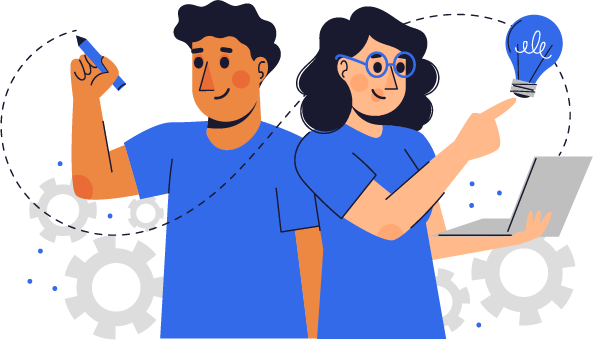
Let's Connect...
Are you interested in Accountancy CBSE/Class 11 ?
or Looking for Something else post your enquiry below.
Accountancy
CBSE/Class 11-
2Chapters
-
92Content
-
4Mock Test
Key Highlights
- Video Lectures
- PDF Notes
- Practice Questions
Overview
- Class-XI (2021-22)
- The course in accountancy is introduced at plus two-stage of the senior second of school education, as the formal commerce education is provided after ten years of schooling. With the fast-changing economic scenario, accounting as a source of financial information has carved out a place for itself at the senior secondary stage. Its syllabus content provide students a firm foundation in basic accounting concepts and methodology and also acquaint them with the changes taking place in the preparation and presentation of financial statements in accordance to the applicable accounting standards and the Companies Act 2013.
Part A: Financial Accounting - I (50 Marks)
Chapter 1 Introduction to Accounting
1.1 Meaning of Accounting
1.2 Accounting as a Source of Information
1.3 Objectives of Accounting
1.4 Role of Accounting
1.5 Basic Terms in Accounting
Chapter 2 Theory Base of Accounting
2.1 Generally Accepted Accounting Principles (GAAP)
2.2 Basic Accounting Concepts
2.3 Systems of Accounting
2.4 Basis of Accounting
2.5 Accounting Standards
Chapter 3 Recording of Transactions - I
3.1 Business Transactions and Source Document
3.2 Accounting Equation
3.3 Using Debit and Credit
3.4 Books of Original Entry
3.5 The Ledger
3.6 Posting from Journal
Chapter 4 Recording of Transactions - II
4.1 Cash Book
4.2 Purchases (Journal) Book
4.3 Purchases Return (Journal) Book
4.4 Sales (Journal) Book
4.5 Sales Return (Journal) Book
4.6 Journal Proper
4.7 Balancing the Accounts
Chapter 5 Bank Reconciliation Statement
5.1 Need for Reconciliation
5.2 Preparation of Bank Reconciliation Statement
Chapter 6 Trial Balance and Rectification of Errors
6.1 Meaning of Trial Balance
6.2 Objectives of Preparing the Trial Balance
6.3 Preparation of Trial Balance
6.4 Significance of Agreement of Trial Balance
6.5 Searching of Errors
6.6 Rectification of Errors
Chapter 7 Depreciation, Provisions and Reserves
7.1 Depreciation
7.2 Depreciation and other Similar Terms
7.3 Causes of Depreciation
7.4 Need for Depreciation
7.5 Factors Affecting the Amount of Depreciation
7.6 Methods of Calculating Depreciation Amount
7.7 Straight Line Method and Written Down Method: A Comparative Analysis
7.8 Methods of Recording Depreciation
7.9 Disposal of Asset
7.10 Effect of any Addition or Extension to the Existing Asset
7.11 Provisions
7.12 Reserves
7.13 Secret Reserve
Chapter 8 Bill of Exchange
8.1 Meaning of Bill of Exchange
8.2 Promissory Note
8.3 Advantages of Bill of Exchange
8.4 Maturity of Bill
8.5 Discounting of Bill
8.6 Endorsement of Bill
8.7 Accounting Treatment
8.8 Dishonour of a Bill
8.9 Renewal of the Bill
8.10 Retiring of the Bill
Accountancy Part II
Chapter 9 Financial Statements - I
9.1 Stakeholders and their Information Requirements
9.2 Distinction between Capital and Revenue
9.3 Financial Statements
9.4 Trading and Profit and Loss Account
9.5 Operating Profit (EBIT)
9.6 Balance Sheet
9.7 Opening Entry
Chapter 10 Financial Statements - II
10.1 Need for Adjustments
10.2 Closing Stock
10.3 Outstanding Expenses
10.4 Prepaid Expenses
10.5 Accrued Income
10.6 Income Received in Advance
10.7 Depreciation
10.8 Bad Debts
10.9 Provision for Bad and Doubtful Debts
10.10 Provision for Discount on Debtors
10.11 Manager’s Commission
10.12 Interest on Capital
Chapter 11 Accounts from Incomplete Records
11.1 Meaning of Incomplete Records
11.2 Reasons of Incompleteness and Its Limitations
11.3 Ascertainment of Profit or Loss
11.4 Preparing Trading and Profit and Loss Account and the Balance Sheet
Chapter 12 Applications of Computers in Accounting
12.1 Meaning and Elements of Computer System
12.2 Capabilities of Computer System
12.3 Limitations of a Computer System
12.4 Components of Computer
12.5 Evolution of Computerised Accounting
12.6 Features of Computerised Accounting System
12.7 Management Information System and Accounting Information System
Chapter 13 Computerised Accounting System
13.1 Concept of Computerised Accounting System
13.2 Comparison between Manual and Computerised
Accounting 13.3 Advantages of Computerised Accounting System
13.4 Limitations of Computerised Accounting System
13.5 Sourcing of Accounting Software 486
13.6 Generic Considerations before Sourcing an
Accounting Software
Automation of Accounting Process. Meaning
Stages in automation
(a) Accounting process in a computerised environment; comparison between manual accounting process and Computerised accounting process.
(b) Sourcing of accounting Software; kinds of software: readymade software; customised software and tailor-made software; Generic Considerations before sourcing accounting software
(c) Creation of Account groups and hierarchy
(d) Generation of reports -Trial balance, Profit and Loss account and Balance Sheet.
TERM – 1 (MCQ BASED QUESTION PAPER) of 40 marks of 90 minutes duration
Part A: FINANCIAL ACCOUNTING-
UNIT 1 THEORETICAL FRAMEWORK:
1 INTRODUCTION TO ACCOUNTING
2 THEORY BASE OF ACCOUNTING
UNIT 2 ACCOUNTING PROCESS:
RECORDING OF BUSINESS TRANSACTIONS,
BANK RECONCILIATION STATEMENT,
DEPRECIATION, PROVISIONS AND RESERVES
Project Work (Part -1): 10 Marks
TERM II Subjective based Question Paper of 40 marks of 2 hrs
Part A
UNIT 2 ACCOUNTING PROCESS:
1 ACCOUNTING FOR BILLS OF EXCHANGE
2 TRIAL BALANCE AND RECTIFICATION OF ERRORS
Part B:
FINANCIAL ACCOUNTING-II
UNIT 3 FINANCIAL STATEMENTS OF SOLE PROPRIETORSHIP FROM COMPLETE AND INCOMPLETE RECORDS
UNIT 4 COMPUTERS IN ACCOUNTING
Project Work (Part -2): 10 Marks
The scope of the unit is to understand accounting as an information system for the generation of accounting information and preparation of accounting reports.
It is presumed that the working knowledge of any appropriate accounting software will be given to the students to help them learn basic accounting operations on computers
Part C: Project Work
Any One:
Collection of Source Documents, Preparation of Vouchers, Recording of Transactions with the help of vouchers.
Preparation of Bank Reconciliation Statement with the given cash book and the pass book with twenty to twenty-five transactions.
Comprehensive project starting with journal entries regarding any sole proprietorship business, posting them to the ledger and preparation of Trial balance.The students will then prepare Trading and Profit and Loss Account on the basis of the prepared trial balance. Expenses, incomes and profit (loss) are to be depicted using pie chart / bar diagram.
Course content
Accountancy Premium
-
2Chapters
-
82Videos
-
10Pdfs
OLExpert’s pricing is dependent on the plan you choose. Plans vary as per grade and the exam a student is preparing for. Also, students can customize the topics as per the requirement. The quality of OLExpert’s content is really great and made it in a very interactive manner.
Video Lectures: OLExpert’s online lecture is an educational lecture designed to be posted online. Lectures are recorded to video, audio, or both, then uploaded and made viewable on a designated site. Videos lectures increase student engagement, which in turn helps boost achievement. If students are interested in the material, they will process and remember it better.
PDF Notes: Creating short notes, highlighting pertinent points, and making these as easy to access, organize and reference as possible should become a priority. This will ultimately help with information retention, as the concentration and active listening it requires will fire up cognitive processes that enhance learning.
Practice Questions: Questions have long been used as a teaching tool by teachers and preceptors to assess students' knowledge, promote comprehension, and stimulate critical thinking. Well-crafted questions lead to new insights, generate discussion, and promote the comprehensive exploration of the subject matter.






